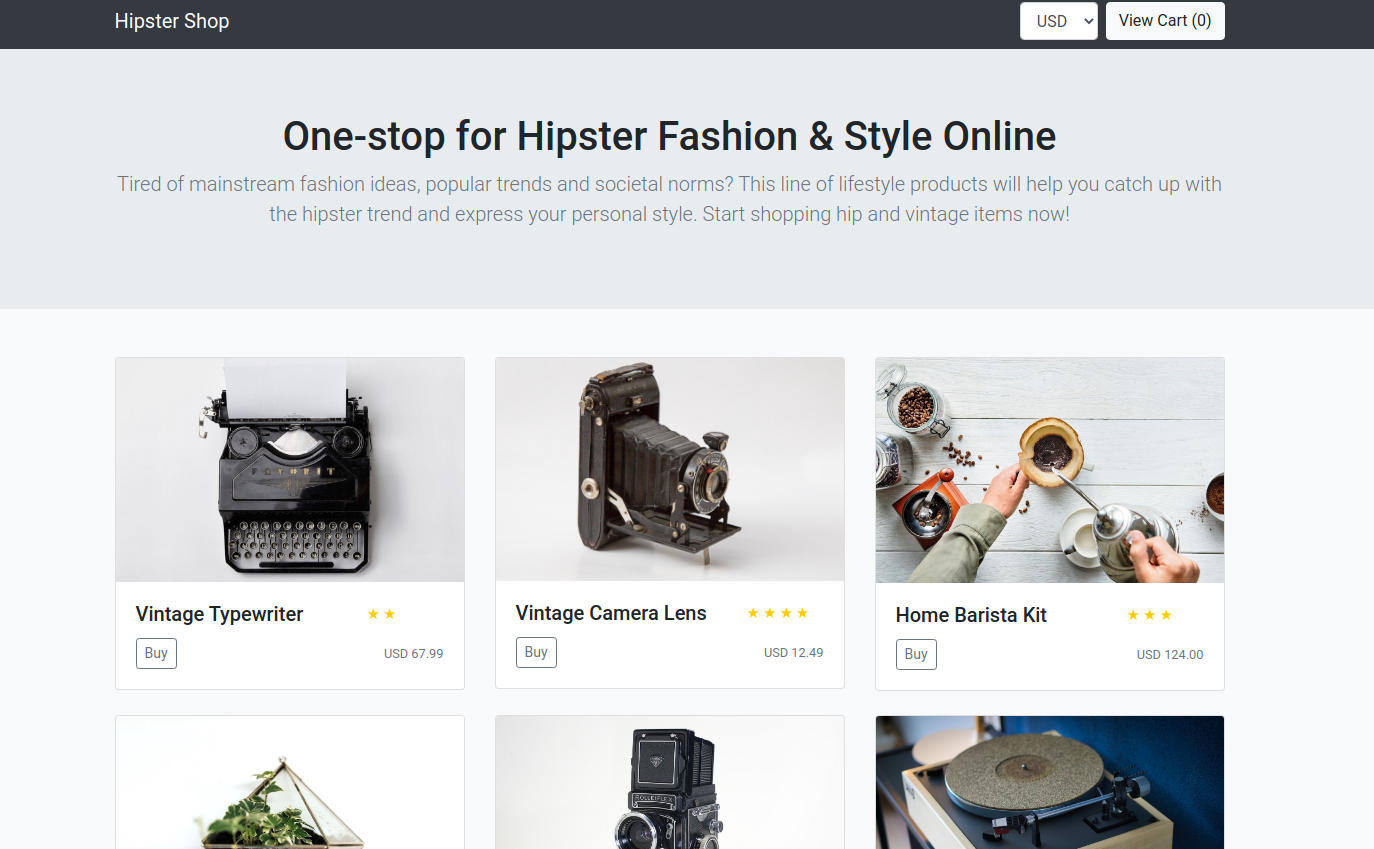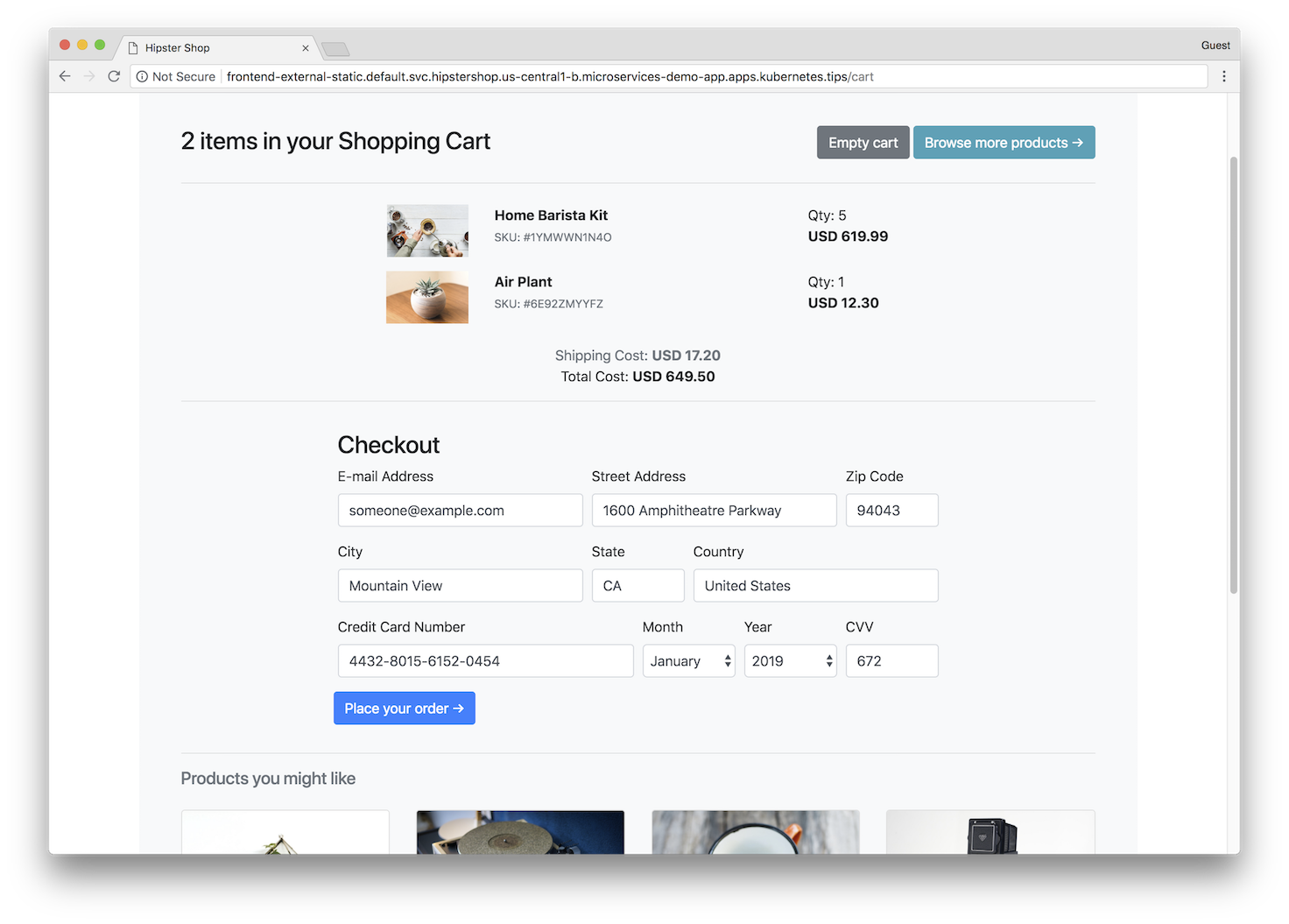Cloud Operations Sandbox is an open-source tool that helps practitioners to learn Service Reliability Engineering practices from Google and apply them on their cloud services using Cloud Operations (formerly Stackdriver). It is based on Hipster Shop, a cloud-native microservices application.
Sandbox offers:
- Demo Service - an application built using microservices architecture on modern, cloud-native stack.
- One-click deployment - a script handles the work of deploying the service to Google Cloud Platform.
- Load Generator - a component that produces synthetic traffic on a demo service.
- (Soon) SRE Runbook - pre-built routine procedures for operating the deployed sample service that follow best SRE practices using Cloud Operations.
Google Cloud Operations Suite is a suite of tools that helps you gain full observability of your code and applications. You might want to take Cloud Operations to a "test drive" in order to answer the question, "will it work for my application needs"? The most effective way to learn is by testing the tool in "real-life" conditions, but without risking a production system. With Sandbox, we provide a tool that automatically provisions a new demo cluster, which receives traffic, simulating real users. Practitioners can experiment with various Cloud Operations tools to solve problems and accomplish standard SRE tasks in a sandboxed environment.
- Using Sandbox
- Service Overview
- Create and enable Cloud Billing Account.
Click the Cloud Shell button for automated one-click installation of a new Sandbox cluster in a new Google Cloud Project.
Note: If installation stops due to billing account errors, set up the billing account and type: sandboxctl create.
- Explore your Sandbox deployment and its architecture
- Follow the User Guide to start using Cloud Operations
- Learn more about Cloud Operations using Code Labs
When you are done using Cloud Operations Sandbox, you can tear down the environment by deleting the GCP project that was set up for you. This can be accomplished in any of the following ways:
- Use the
sandboxctlscript:
sandboxctl destroy- If you no longer have the Cloud Operations Sandbox files downloaded, delete your project manually using
gcloud
gcloud projects delete $YOUR_PROJECT_ID- Delete your project through Google Cloud Console's Resource Manager web interface
This project contains a multi-tier microservices application. It is a web-based e-commerce app called “Hipster Shop”, where users can browse items, add them to the cart, and purchase them.
| Home Page | Checkout Screen |
|---|---|
 |
 |
Hipster Shop is composed of many microservices, written in different languages, that talk to each other over gRPC and REST API.
We are not endorsing the architecture of Hipster Shop as the best way to build such a shop! The architecture is optimized for learning purposes and includes modern stack: Kubernetes, GKE, Istio, Cloud Operations, App Engine, gRPC, OpenTelemetry, and similar cloud-native technologies.
Find the gRPC protocol buffer descriptions in the ./pb directory.
| Service | Language | Description |
|---|---|---|
| frontend | Go | Exposes an HTTP server to serve the website. Does not require signup/login, and generates session IDs for all users automatically. |
| cartservice | C# | Manages the items in the user's shipping cart by using Redis. |
| productcatalogservice | Go | Provides the list of products from a JSON file and the ability to search and retrieve products. |
| currencyservice | Node.js | Converts one currency to another, using real values fetched from the European Central Bank. It's the highest QPS service. |
| paymentservice | Node.js | Charges the given credit card info (hypothetically😇) with the given amount and returns a transaction ID. |
| shippingservice | Go | Gives shipping-cost estimates based on the shopping cart. Ships items to the given address (hypothetically😇). |
| emailservice | Python | Sends users an order-confirmation email (hypothetically😇). |
| checkoutservice | Go | Retrieves a user's cart, prepares the order, and orchestrates payment, shipping, and email notification. |
| recommendationservice | Python | Recommends other products based on what's in the user's cart. |
| adservice | Java | Provides text ads based on given context words. |
| loadgenerator | Python/Locust | Continuously sends requests that imitate realistic shopping flows to the frontend. |
| ratingservice | Python3 | Manages ratings of the shop's products. Runs on App Engine. |
- Kubernetes/GKE: The app is designed to run on Google Kubernetes Engine.
- gRPC: Microservices use a high volume of gRPC calls to communicate to each other.
- OpenTelemetry Tracing: Most services are instrumented using OpenTelemetry tracers and interceptors which handle trace context propagation through gRPC and HTTP.
- Cloud Operations APM and SRE: Many services are instrumented with Profiling, Tracing, Debugging, Monitoring, Logging and Error Reporting.
- Skaffold: A tool used for doing repeatable deployments. You can deploy to Kubernetes with a single command using Skaffold.
- Synthetic Load Generation: The application demo comes with dedicated load generation service that creates realistic usage patterns on Hipster Shop website using Locust load generator.
- Google App Engine: PaaS for running Web applications and services.
- Google Cloud SQL: Fully managed relational database service for MySQL, PostgreSQL and SQL Server.
If you are a developer and want to contribute to the Sandbox, you can refer to CONTIBUTING.md.
This is not an official Google project.

